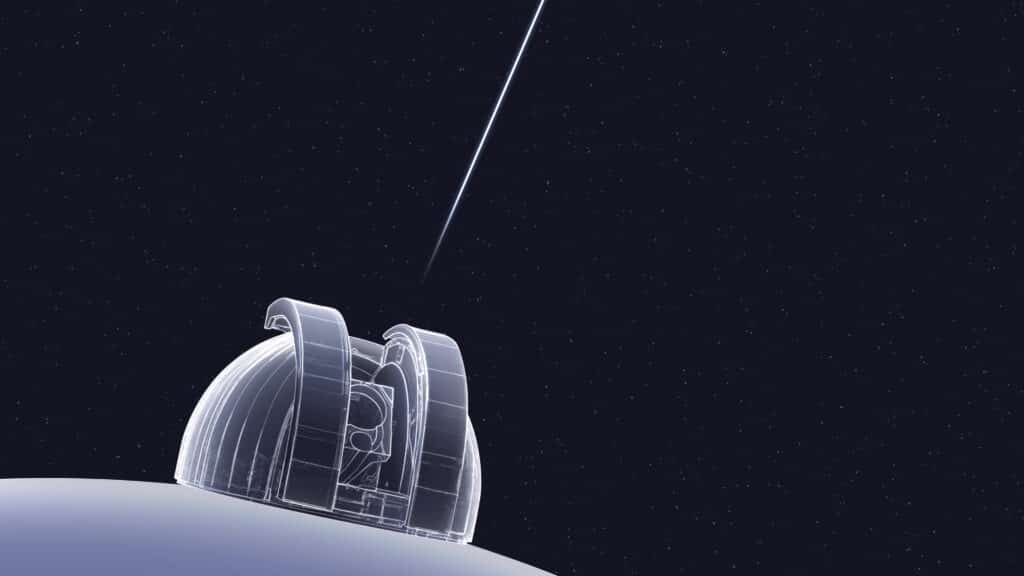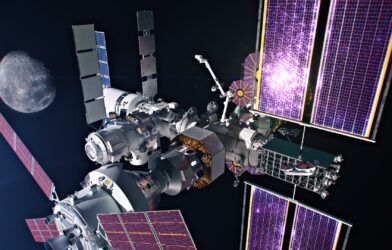NASA’s Deep Space Optical Communications (DSOC) experiment has made a groundbreaking achievement in space communication technology, achieving what could be a pivotal moment in the way we explore the universe. The experiment, part of the Psyche spacecraft’s mission, successfully beamed a near-infrared laser encoded with test data from nearly 10 million miles away to the Hale Telescope at Caltech’s Palomar Observatory in San Diego.
To put the feat in perspective, that’s about 40 times farther than the distance between the Earth and the Moon. This demonstration is not just a record for the distance over which optical communications have been tested; it also represents a significant step towards enhancing the bandwidth of data transmission from space.
Trudy Kortes, director of Technology Demonstrations for the Space Technology Mission Directorate at NASA, believes the experiment is an extraordinary stepping stone for future missions. “Achieving first light is one of many critical DSOC milestones in the coming months, paving the way toward higher-data-rate communications capable of sending scientific information, high-definition imagery, and streaming video in support of humanity’s next giant leap: sending humans to Mars,” she says in a statement.
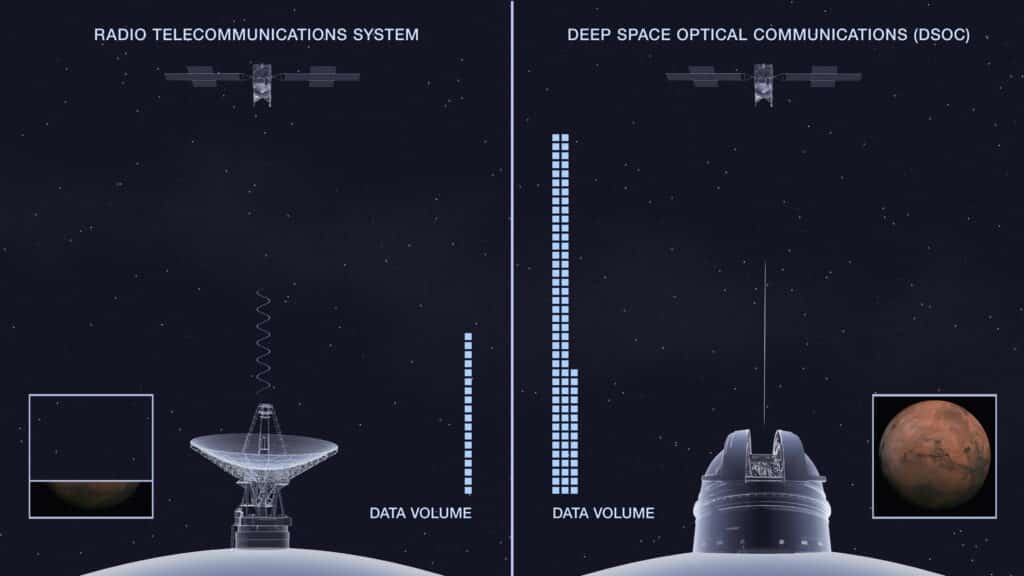
How Does DSOC Work?
The DSOC experiment utilizes a flight laser transceiver aboard the Psyche spacecraft, capable of sending and receiving near-infrared signals. The “first light” achievement, referring to the first successful use of this technology, occurred in the early hours of Nov. 14.
This milestone involved the transceiver locking onto a powerful uplink laser beacon transmitted from the Optical Communications Telescope Laboratory at JPL’s Table Mountain Facility. The procedure, known as “closing the link,” is crucial for the experiment and demonstrates the potential for high-bandwidth data transmission necessary for future deep space missions.
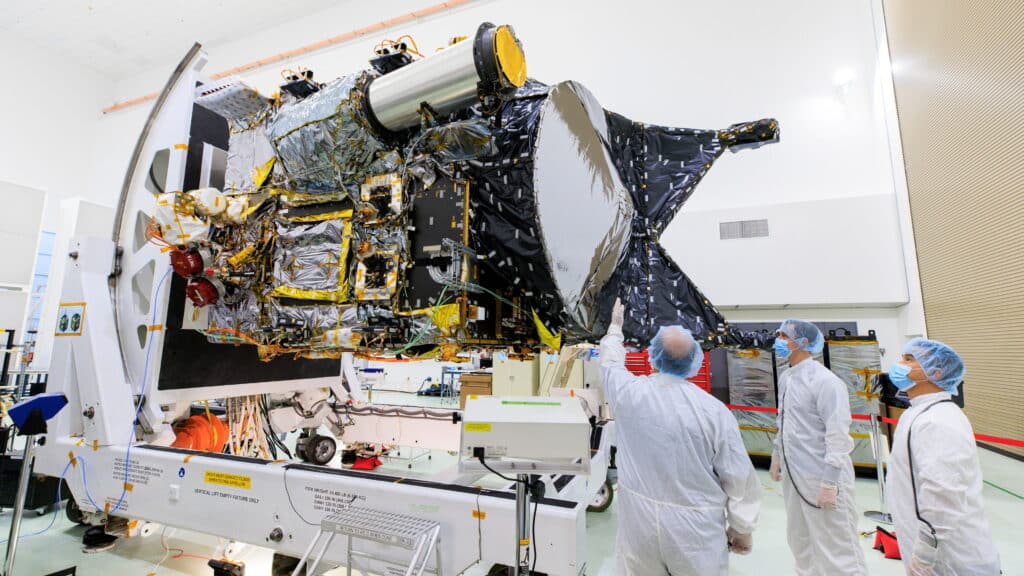
The process involves encoding data into bits within the laser’s photons, quantum particles of light. These photons are then detected by a special superconducting high-efficiency detector array at the Hale Telescope. New signal-processing techniques are then used to extract the data from these photons.
Step Closer To Manned Deep Space Missions
The DSOC experiment is essential for the future of space exploration. It aims to demonstrate data transmission rates 10 to 100 times greater than current radio frequency systems used by spacecraft.
“Optical communication is a boon for scientists and researchers who always want more from their space missions, and will enable human exploration of deep space,” says Dr. Jason Mitchell, director of the Advanced Communications and Navigation Technologies Division within NASA’s Space Communications and Navigation (SCaN) program.
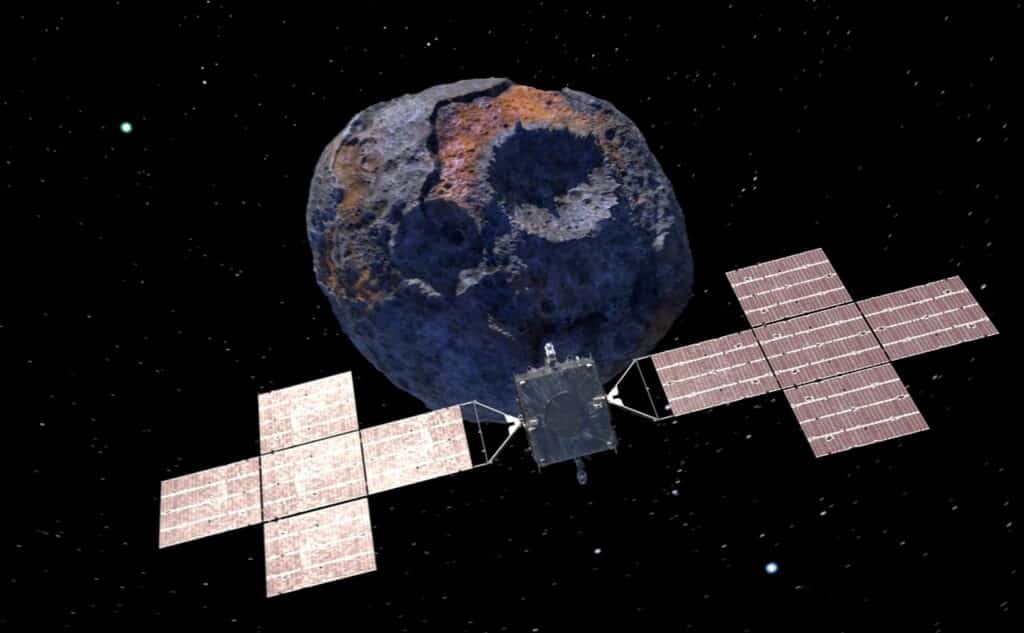
One of the major challenges of this technology is the extreme precision required in aiming the laser beam over millions of miles, akin to using a laser pointer to track a moving dime from a mile away. Additionally, the communication system must compensate for the time light takes to travel from the spacecraft to Earth, which can be about 20 minutes at the farthest distance.
With DSOC’s successful “first light,” NASA is paving the way for more sophisticated and higher-resolution science instruments in space exploration. This achievement is not just a technological feat but also a harbinger of the incredible potential of optical communications in opening new frontiers in our quest to explore the cosmos.
